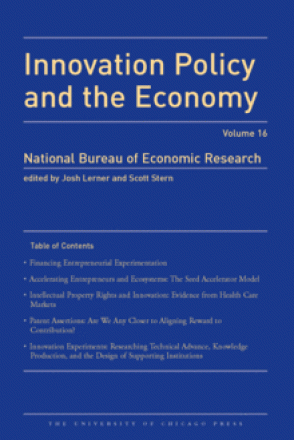Intellectual Property Rights and Innovation: Evidence from Health Care Markets

You may be able to download this chapter for free via the Document Object Identifier.
A long theoretical literature has analyzed optimal patent policy design, yet there is very little empirical evidence on a key parameter needed to apply these models in practice: the relationship between patent strength and research investments. I argue that the dearth of empirical evidence on this question reflects two key challenges: the difficulty of measuring specific research investments, and the fact that finding variation in patent protection is difficult. I then summarize the findings of two recent studies which have made progress in starting to overcome these empirical challenges by combining new datasets measuring biomedical research investments with novel sources of variation in the effective intellectual property protection provided to different inventions. The first study, Budish, Roin and Williams (forthcoming), documents evidence consistent with patents affecting the rate and direction of research investments in the context of cancer drug development. The second study, Williams (2013), documents evidence that one form of intellectual property rights on the human genome had quantitatively important impacts on follow-on scientific research and commercial development. I discuss the relevance of both studies for patent policy, and discuss directions for future research.
-
Copy CitationHeidi L. Williams, Innovation Policy and the Economy, Volume 16 (University of Chicago Press, 2015), chap. 3, https://www.nber.org/books-and-chapters/innovation-policy-and-economy-volume-16/intellectual-property-rights-and-innovation-evidence-health-care-markets.Download Citation


